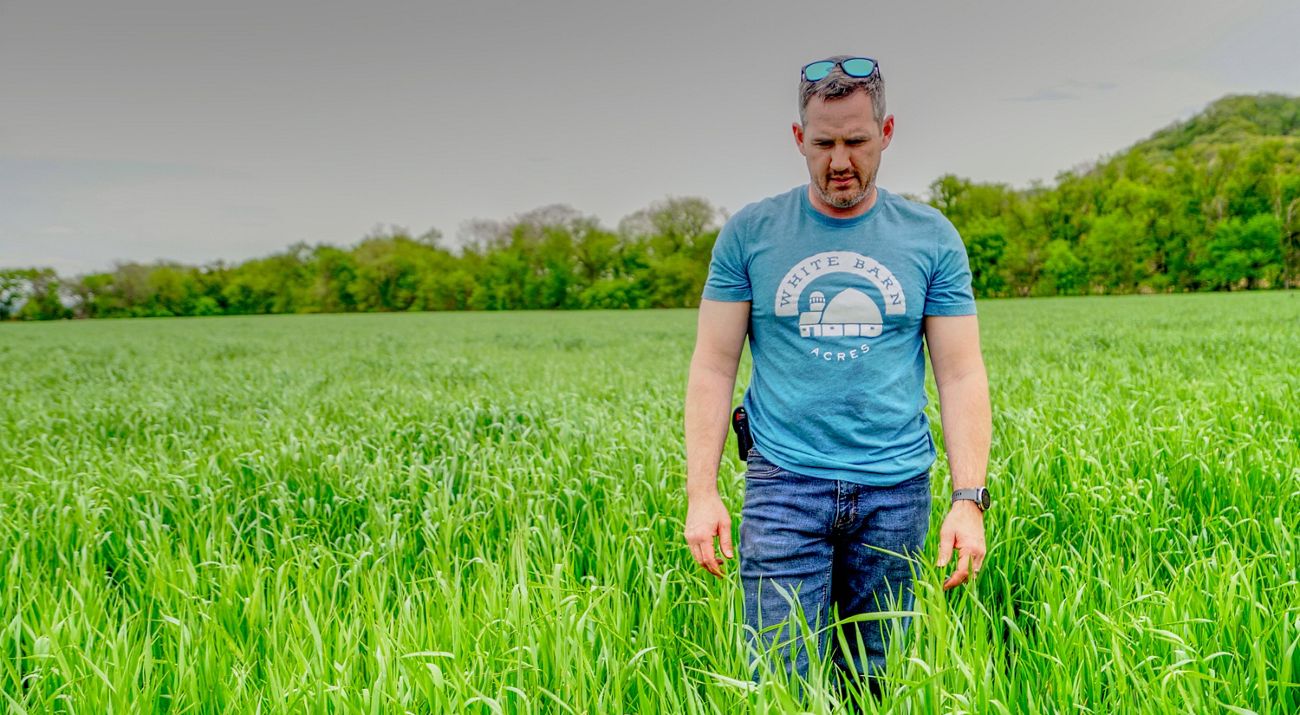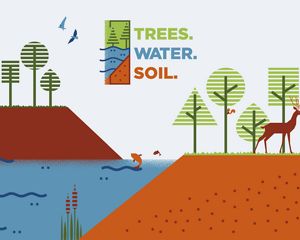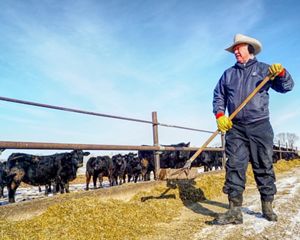Rejuvenating the Soil: Matt Tentis
How one family farm prioritizes soil health to benefit climate, water and their operation.
Matt Tentis balances two careers: he’s a physician’s assistant in the Mayo Clinic Health System, and he’s also a farmer. Along with his brother Seth and their mother Kathy, Matt operates White Barn Acres, LLC, a 300-acre farm near Kellogg, in southeastern Minnesota. The White Barn Acres farm lies within the Mississippi River Valley and includes a wooded area and a stream that connects to the Zumbro River.

Farming runs in the family; Matt’s father and uncle were farmers too and raised dairy cattle, pigs and turkeys. Over time, they transitioned to corn and soybeans. The Tentis family now grows corn and soybeans and raises cattle.
In addition to his full-time career with Mayo, Matt has young children at home, as does his brother Seth, and both of them prioritize time with their families. Because of their time constraints, they became interested in efficient farming practices.
For example, conventional tillage requires multiple passes over the field. “We knew we would not have the time and would need to move to a no-till practice,” Tentis says. They also appreciated that no-till was a less expensive approach.


No-till farming poses some challenges, making it harder to incorporate nutrients into the soil and to control weeds mechanically, and it takes time for its benefits to be realized in a field. The Tentis’ fields are a mix of low-till and no-till for sweet corn.
Around the time they were considering no-till practices, they received the results of a water quality test and learned that their water contained three times the amount of nitrates that is considered acceptable.
The White Barn Acres team understood the high nitrate load was a result of the addition of herbicides and pesticides to the land. They were concerned about these substances ending up in drinking water.
They also studied the climate impacts of farming practices and learned that increasing organic matter on the land improves its resilience to climate change. In 2019, the area experienced three floods that overwhelmed nearby streams and the Zumbro River, flooding part of their property. Tentis says that floods like that used to happen once a season or even less often when he was a child. He sees increased rainfall as a byproduct of climate change and was interested in improving the health of his soil to enable it to absorb additional rainwater and mitigate drought.
Quote: Matt Tentis
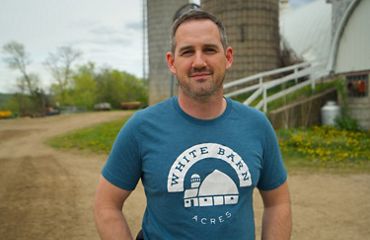
We decided none of the land we run would be neglected or go to waste.
When they were considering different farming practices, Tentis says, “upfront, the decision was, ‘Is this good for our business?’” By embracing no-till practices, White Barn Acres was able to reduce their annual expenses by $20,000, because they no longer had to spend money on equipment maintenance and tillage.
White Barn Acres also plants cover crops. They started in 2015, working with the Natural Resources Conservation Service, which offers programs that educate farmers on cover crops and provide financial support to farmers who plant them. Cover crops are not planted for harvesting, they’re planted to control erosion and protect the land. The Tentis family planted rye as silage for feed. In 2017, Tentis planted their first cover crop that would remain on the land over the winter. They ran it as a trial on a single field. Since 2019, they’ve maintained a crop on the land all year. Cover crops allow cattle to graze longer into the winter season, reducing costs associated with feed and labor, equipment, and fuel, and protecting the soil from erosion.
Mission and values are central to how White Barn Acres operates. Tentis says, “We decided none of the land we run would be neglected or go to waste. You can say that and talk about profitability at the same time.” Their values influence their decisions about no-till and cover crops, as well as how they manage land they rent from other landowners. Over time, as a result of no-till and other practices, White Barn Acres has seen their soil health improve.
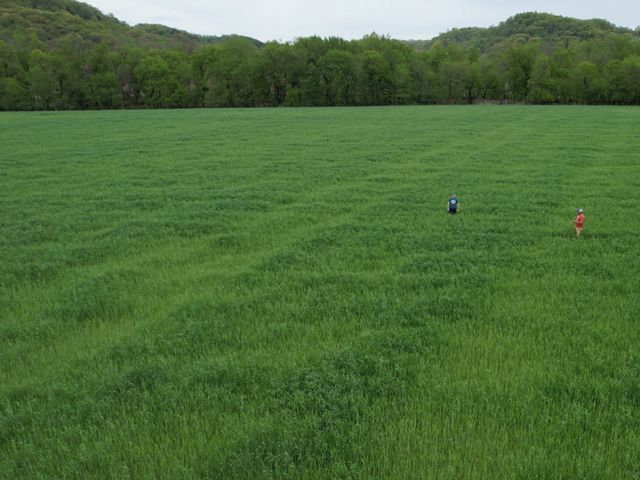
The land that they rent includes a small forest, which they operate as a silvopasture. Silvopastures integrate livestock and trees on the same land and are managed for forest products and forage, providing both short-term and long-term income. Although the land is not owned by White Barn Acres, they care about its long-term health. They plant black walnut and other kinds of trees on the property and are conscientious about the species they plant. White Barn Acres is able to embrace silvopasture in part because their farm includes fields where they can graze cattle in a rotational grazing program. The fields are adjacent to tree lines that block the wind and help maintain the fencing.
Want More Stories?
Get new stories and timely action alerts so you can speak for our trees, water and soil.
Sign up
White Barn Acres has seen measurable improvements to the land as a result of their practices. Rotational grazing, which includes a period of rest, allows the land to recover after grazing. The family has noted less algae growth in a pond on their land, indicating lower levels of nutrients from runoff. The soil in their working fields does not crust over; it is softer in texture and seems more workable. The areas where their cattle forage support lusher, higher quality vegetation, and the banks along their stream are better controlled, which has improved water quality.
In the future, White Barn Acres hopes to see more pollinators and birds on their land. Tentis recalls growing up in the area and feeling many connections to the land and the family farm. They apply their philosophy of “neglect nothing, waste nothing” to preserve the land for future generations.
